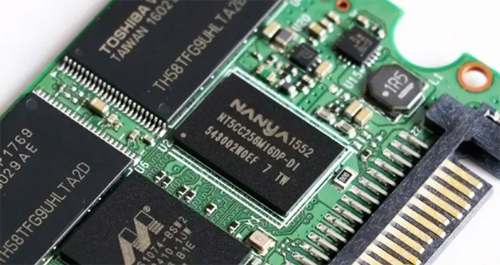Niche DRAM prices fell 30% in the second half of the year
According to media reports in Taiwan, China, due to high inflationary pressures, rising interest rates, and the mainland's epidemic control and other factors, the demand for consumer electronics has cooled significantly, and the quotations of many key electronic components have fallen synchronously. Among them, the niche DRAM market has suffered a sharp decline in demand due to the sluggish global consumer electronics buying, and Samsung's switching product line has resulted in a sharp increase in supply. This season's traditional peak season quotations did not rise but fell. It fell 13% to 18%, and the fourth quarter could not be stabilized as expected, and it may fall by another 10%. That is to say, the cumulative decline of niche DRAM in the second half of the year is expected to reach 30%. Among all key components, the correction rate is relatively For large categories, with the simultaneous dive of spot price and contract price, the prosperity of related manufacturers who made big profits last year may "never go back".
The industry pointed out that niche DRAM is widely used in consumer electronics, automotive, Netcom, and handheld terminal products, with DDR3 as the mainstream. Compared with the current DDR4 and DDR5 used in standard DRAM applications, DDR3 has a relatively low capacity and technical level. At this stage, it is almost dominated by Taiwanese manufacturers. Nowadays, terminal applications have shrunk significantly, and quotations have plummeted. The impact on Taiwanese manufacturers is relatively low. big.
In addition, it has also recently been reported that South Korea's Samsung Electronics considered the poor market conditions of CMOS image sensors (CIS), and cut CIS film production. The supply has increased, but Samsung's move has put more pressure on the price of the niche DRAM market due to the current shrinking demand.
The industry has originally regarded the short-term niche DRAM market conservatively. It is estimated that the price in the third quarter will drop by 10% compared with the second quarter. It was originally expected that with the market inventory depletion gradually come to an end, the quotation in the fourth quarter is expected to stabilize. However, as the terminal market conditions have not improved, the market conditions in the fourth quarter may be worse than expected, making it hopeless for prices to stabilize, and the overall price drop in the second half of the year is higher than industry expectations.
According to recent quotations from market research agency TrendForce, the price difference between the high and low prices of DDR3 4Gb has dropped by nearly 20% from the point of view of the weekly price in the spot market. The industry believes that the contract price and spot price will dive simultaneously this quarter, with a quarterly decrease of about 13% to 18%. In addition, in order to maintain capacity utilization, Samsung has transferred CIS production capacity back to niche DRAM. Under the interference of multiple unfavorable factors, The quotation for the fourth quarter may be revised by more than 10%.
Recently, the fundamentals of Taiwan's niche DRAM-related companies have shown signs of fatigue. Nanya Technology's revenue in July fell by more than 16% to 4.396 billion yuan, a 44.7% decline compared to the same period last year, and its monthly revenue has dropped for nearly two years. Half way down. Nanya Technology said frankly that in the third quarter, both costs and prices went in an unfavorable direction, with a high probability of a decline in gross profit margins and a more challenging operation. As for the market conditions in the fourth quarter, it depends on whether inflation can be controlled.
Jiao Youjun, chairman of Winbond Electronics, also said recently that the market situation is very difficult to judge, and customers continue to wait and see, and the operation in the second half of this year may not be as good as the first half of the year. Etron’s July performance also reflected the weak market conditions, with a monthly revenue of 357 million yuan, a monthly decrease of 19.7% and an annual decrease of 30.8%, which was the lowest point in the past 17 months; Jinghaoke’s July revenue was also revised to 12.5 100 million yuan, a monthly decrease of 23.6% and an annual decrease of 42.2%, which is a new low in the past 23 months.

